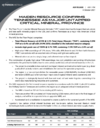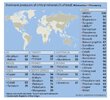Dona Ferentes
Beware of geeks bearing grifts
- Joined
- 11 January 2016
- Posts
- 18,313
- Reactions
- 25,112
Critical Minerals Facility .... established by govt. ... and maybe try to pick winners. Usually, the choices are not the best candidates, on past history. Already got NAIF splashing the cash around, in related exercises.the sector was not excited...
Also .... "Australia's resources producers" ... I would prefer "Australian resources producers"
$2bill in loans over 10 years. ... that's $200M a year. Not a lot









